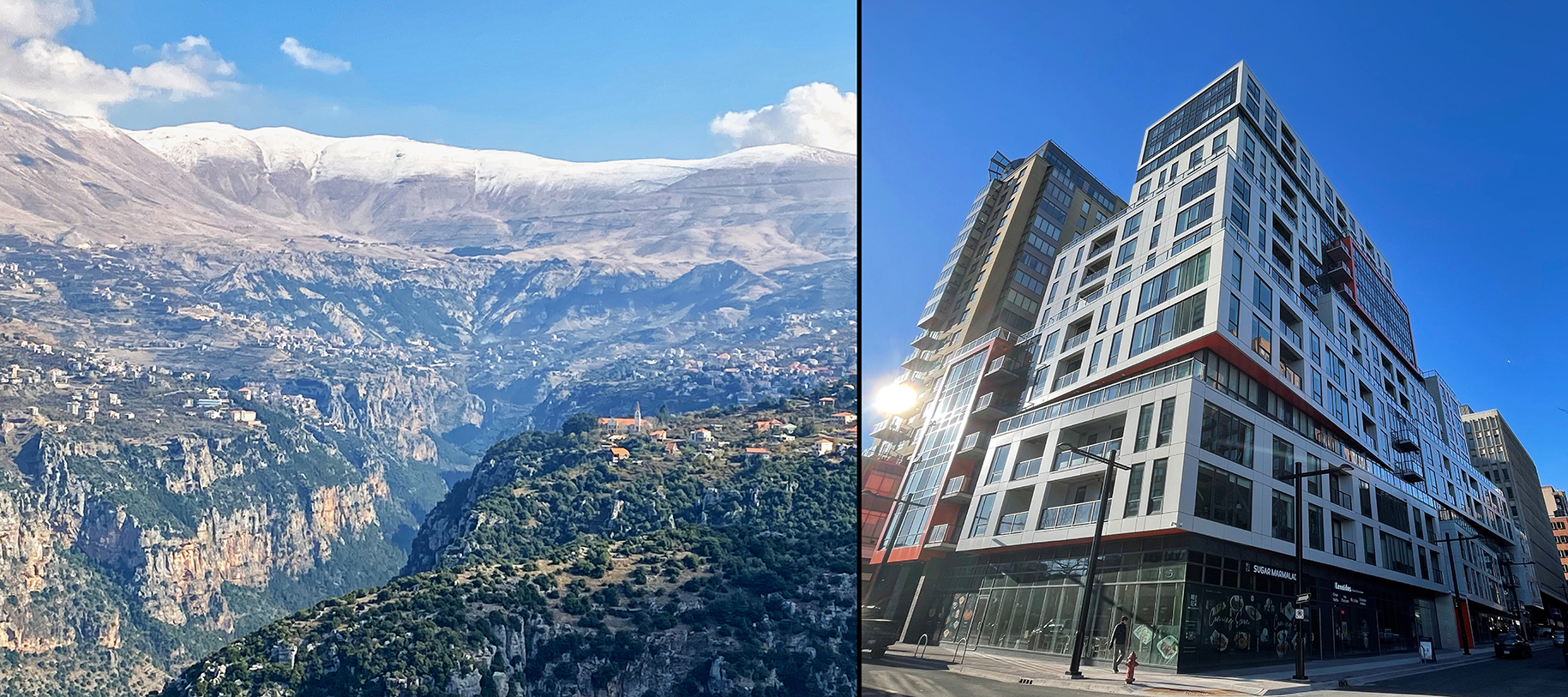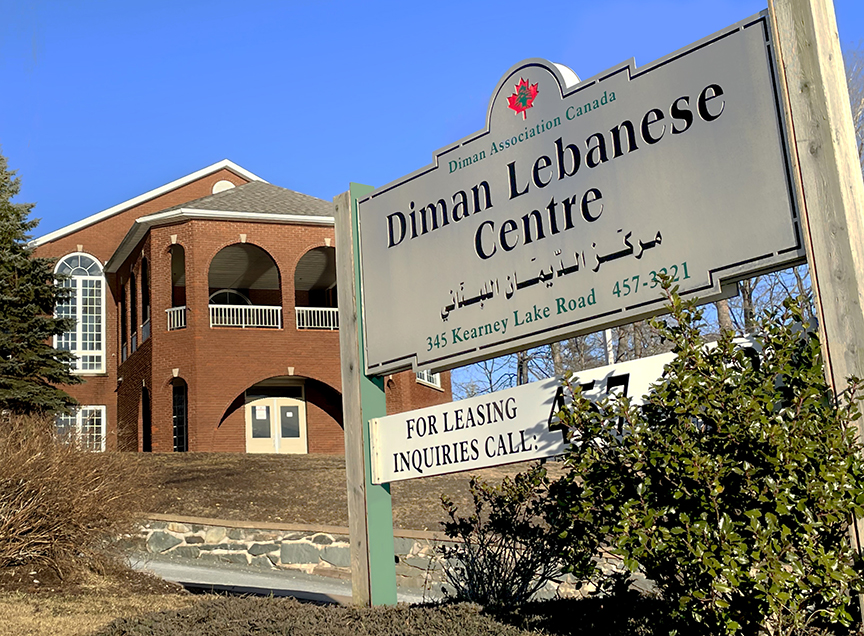
In the north of Lebanon, 1,400 metres above sea level, there is a village called Diman. It’s small. There are 650-700 registered residents. You can walk from one corner to the other in around 20 minutes.
In the city of Halifax, by some estimates, there are as many people who originate or whose families originate from Diman as there are in the village itself. Perhaps even more surprising is how successful members of the community have been. Among them are business and community leaders, provincial and federal politicians, and some of the city’s most prominent real-estate developers. Halifax has a significant population of Lebanese Canadians- nearly four times the national average. The community in general, including families from Diman and surrounding villages, has had an outsized effect on the city of Halifax- its culture, food, street names, economy and skyline.
So how did it happen? Why have so many individuals and families from this village resettled in Nova Scotia? When did it start? And what is behind the community’s success?
Deep roots
The first documented villager from Diman to settle in Nova Scotia, Abraham Arab, arrived in 1894. Edward Arab Avenue in Halifax’s Westmount neighbourhood is named after his grandson. Edward was the founding President of the Canadian Lebanon society in 1938 and was killed while serving Canada in the Second World War.
A short time after his arrival, Abraham was followed by others. These early immigrants were mostly men who worked as peddlers, walking rural roads carrying 100-pound packs with goods for sale and trading small gifts for a night’s stay with a farmer who might take them in. Jasmine Ghosn’s grandfather arrived shortly after Abraham Arab. She says, “in our culture, it would be considered a sin to get married and have children if you can’t provide for them. So, the goal is to save your money and build a home”. As time went on and finances permitted, these men opened stores and sent money for other family members to join them in Canada.
But it wasn’t just a one-way path from Diman to Halifax. Some men went back to the village for a time, married and returned later with their families. Ghosn’s grandfather had this goal in mind, but when the First World War broke out, decided to raise his family in Diman. Years later, in 1958, his sons Joseph and Jacob (Jasmine’s father) moved to Halifax.
They weren’t starting from nothing
When the brothers arrived, they were given a place to stay at the home of the Metlej family, who had come from the village in 1955. Tony Metlej, who was born in Halifax the year of his parents’ arrival, contests the common idea that the early immigrants from Lebanon started with nothing. In his 2012 Oral History interview with the Museum, he says, “there wasn’t anything they couldn’t do. Especially when you grow up in rural Lebanon- you have to know how to do your own electrical service, your own plumbing… They were a pretty intelligent group of people that came over. So, it’s no shock that their kids all were pushed to go to university.”
Over successive decades, more close relatives and friends arrived. People worked hard, often starting in entry-level jobs as cleaners or bartenders or in factories to gain a foothold and eventually start a family business.
When a civil war in Lebanon in the 1970s and 1980s drove people from the country, many chose Halifax. Others chose Sydney, Australia, perhaps the only other city in the world with as many members of the Diman diaspora.
According to Tony, “About a third of our town ended up in Sydney, Australia, a third in Halifax, and there’s a third still in Diman.”[1]
Members of the diaspora in Halifax have been successful in politics. In 2013, Lena Metlege Diab became the first Lebanese Canadian in Nova Scotia’s cabinet, serving, among other things, as Minister of Immigration for the province. She is now a Member of Parliament. Following closely in her footsteps, Patricia Arab has also served in the provincial cabinet and is currently a member of the opposition Liberal caucus.
There are no skyscrapers in Diman
At some point, a number of individuals and families became property developers. Today, many of the large construction projects in Halifax’s booming urban core are led by developers from the community.
How did this happen?
Jasmine, who is President of the Sisterhood of Diman Foundation, which funds education and youth empowerment, thinks this was a natural progression: “Times were tough for newcomers…Two brothers would share one room and rent four rooms upstairs to roomers so that they could generate some kind of an income.
“A lot of people started off that way. They started to buy derelict property. Then they fixed it up over time, and they built some equity, and the natural progression was to buy more real estate. And they became experts at developing and maintaining property.”
She says family members advised and helped each other, building up a network of knowledge. This interdependence helped create a sense of independence and security. “It’s something you have control over. You didn’t have to rely on someone to give you a job.”
In Halifax, the skyline has been transformed by large projects initiated by developers with roots in Diman, including the $500 million Nova Centre in the heart of downtown, King’s Wharf, a multi-building development on the Dartmouth harbourfront, and numerous condo and apartment buildings trying to keep pace with the city’s population growth. Some of the family names attached to Halifax’s construction projects (Fares, Metlege, Ghosn, Arab, Ramia) are visible on businesses located in the village, like Ghosn Market and Kamil Arab General Store.

Chain Migration
Chain migration occurs when new immigrants move to a destination where they already have family, friends, or some resource network. The movement of people from Diman to Halifax provides an example of a chain migration that continues to this day. Jasmine says, “I brought my cousin here in 2010… and a lot of people are bringing new relatives as we speak”.
Nina Laba’s father, Halim, moved to Halifax from Diman (via Ghana) and opened the Fancy Lebanese Bakery in 1962. The bakery offered a first job for many immigrants arriving in Halifax with nothing. Now producing two hundred thousand bags of pita per day, it supplies the province’s major grocery stores and many of its restaurants. Nina says, “I’m the most patriotic Canadian you can imagine. But we all feel connected to that village.”
Her cousin Mario’s father came to work in the bakery during the civil war. Mario’s mother, also from Diman, was here already, but the two had known each other in the village. They reconnected in their new home and married. “There’s lots of generations of us here now,” says Mario. Despite being born and raised in Halifax, he says he would feel an immediate responsibility to welcome someone from the village who had just arrived. “In Arabic, the word is wejbet.” Culture plays a role in chain migration. For the Diman diaspora, the sense of connection to family and the village, along with an entrepreneurial spirit, have allowed the community to flourish.
- Oral History with Tony Metlej, Canadian Museum of Immigration at Pier 21 Collection (12.05.22TM).